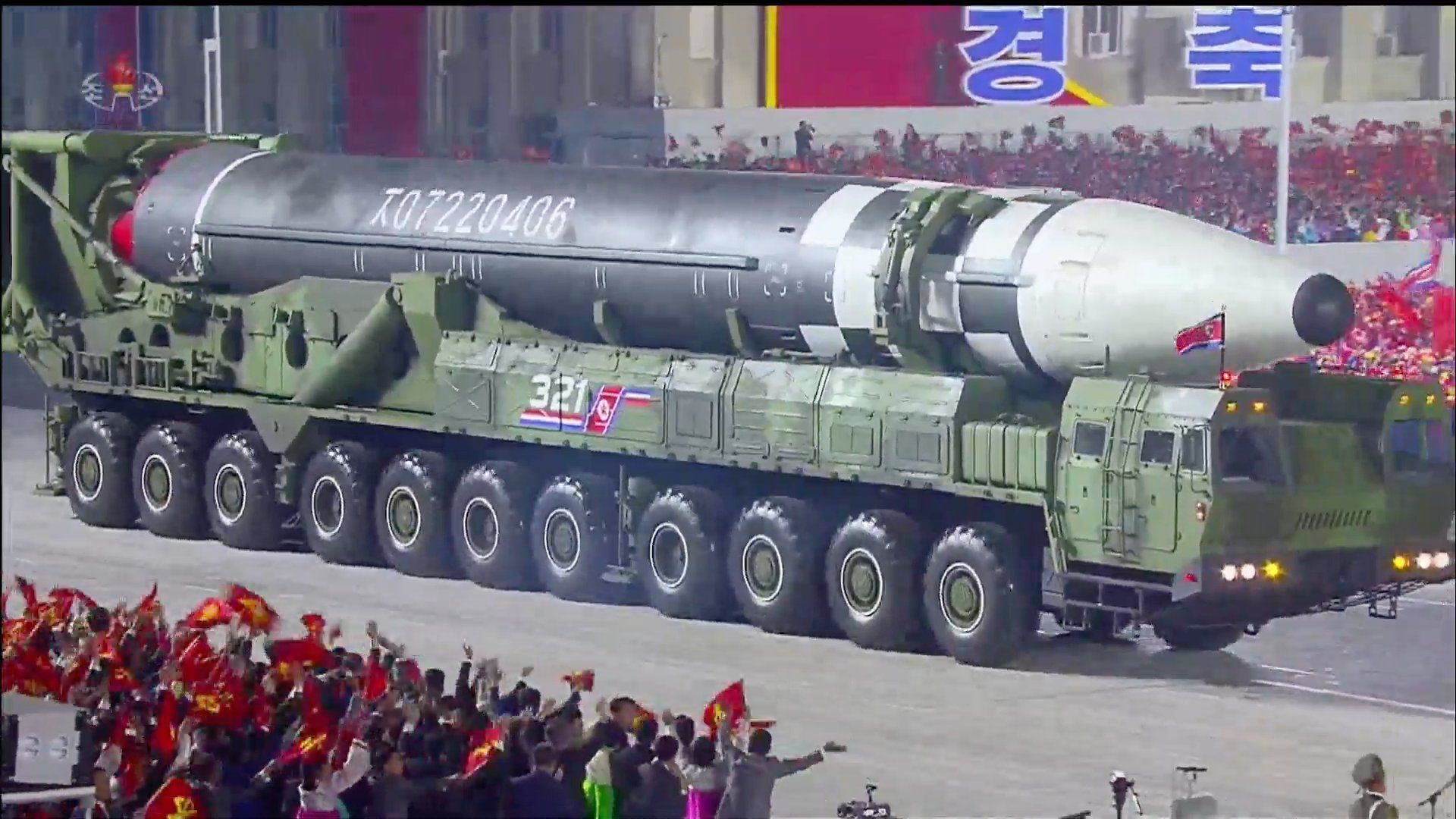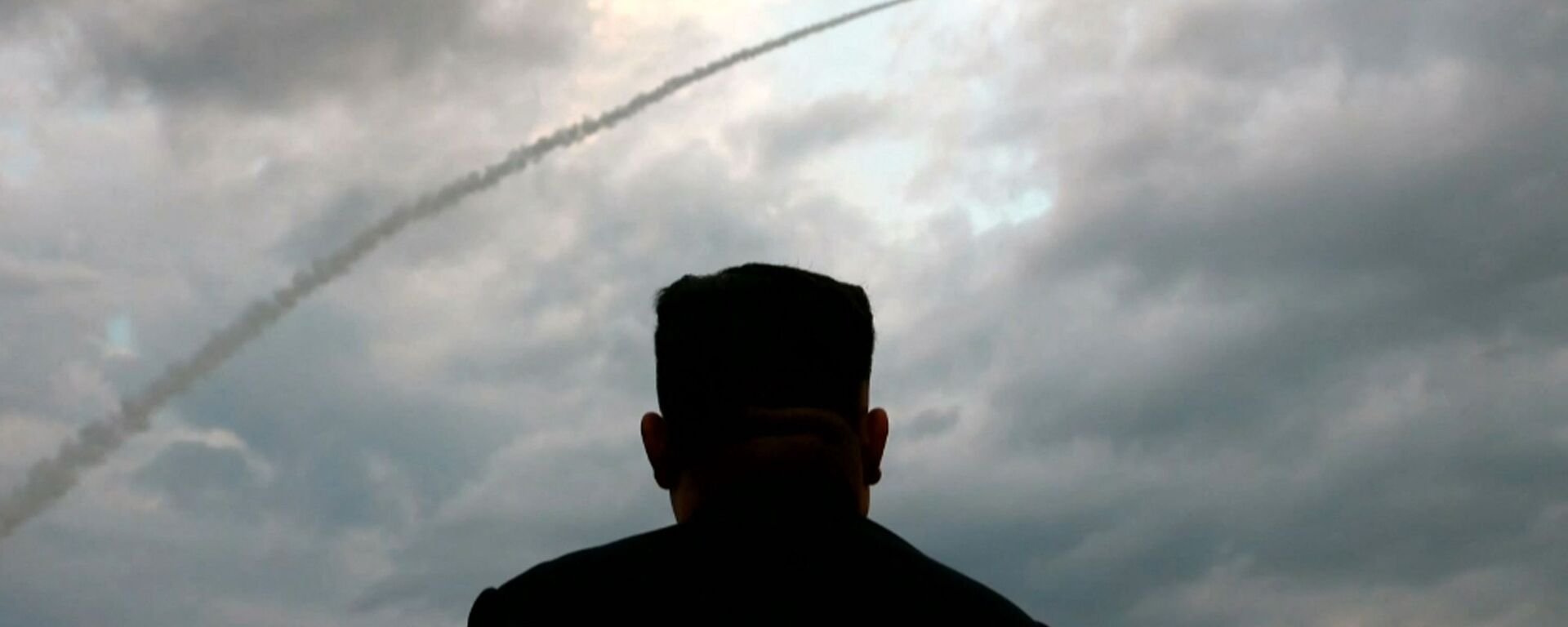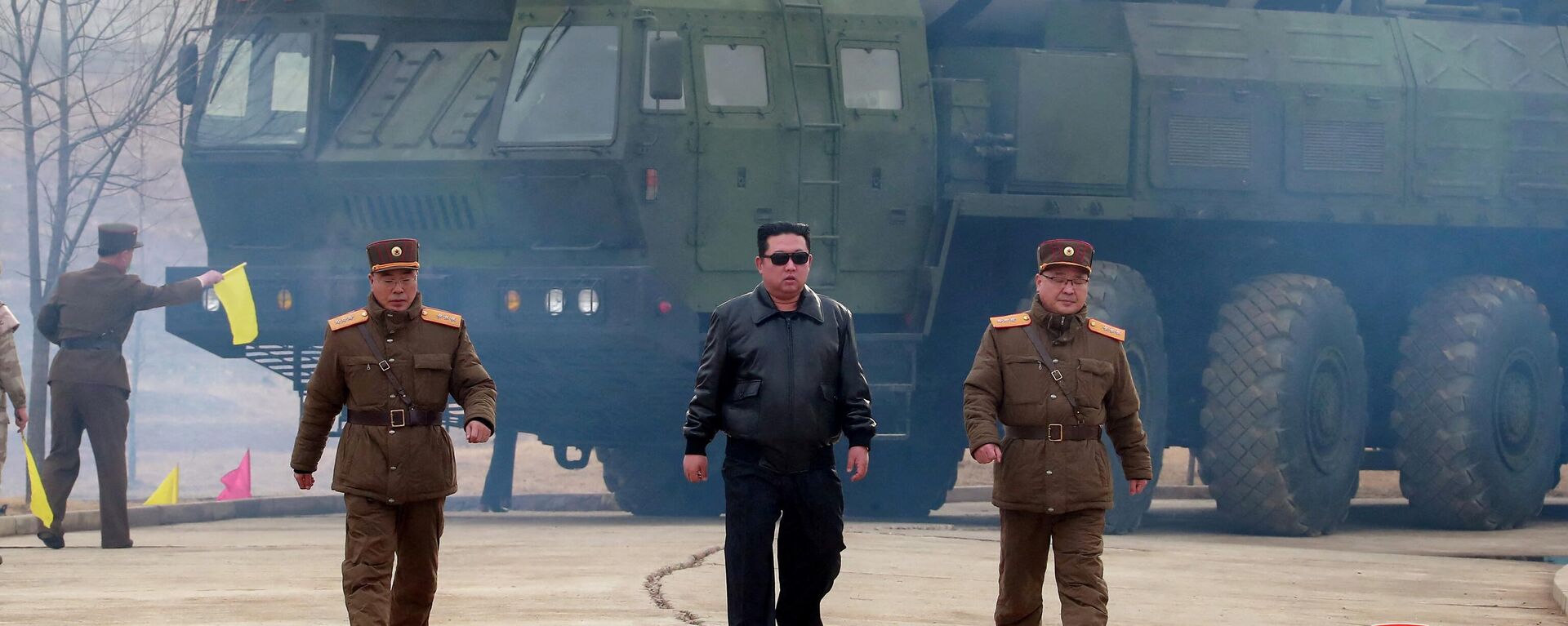https://sputnikglobe.com/20230210/what-is-pyongyangs-possible-new-icbm-that-was-paraded-to-mark-the-dprks-army-anniversary-1107312080.html
What is Pyongyang’s Possible New ICBM That Was Paraded to Mark the DPRK's Army Anniversary?
What is Pyongyang’s Possible New ICBM That Was Paraded to Mark the DPRK's Army Anniversary?
Sputnik International
Despite being under strict international sanctions over its missile and nuclear weapons programs, North Korea goes ahead with its drive to carry out missile tests.
2023-02-10T13:29+0000
2023-02-10T13:29+0000
2023-09-18T13:36+0000
sputnik explains
pyongyang
icbm
launch
military parade
north korea
https://cdn1.img.sputnikglobe.com/img/07e4/0a/0a/1080731923_0:0:1920:1080_1920x0_80_0_0_00f725a91b0dd69590bdfd7ecc77cf68.jpg
During a recent nighttime military parade on Pyongyang’s Kim Il Sung Square to mark the 75th anniversary of the founding of the DPRK army, North Korea showed off what analysts believe is the country’s new solid-fuel intercontinental ballistic missile (ICBM). So what is this piece of military hardware all about and how could it boost the North’s defense capability? Sputnik explores. What is the Difference Between Liquid and Solid Fuel ICBMs?Most of the ballistic missiles in North Korea use liquid fuel, which requires them to be loaded with propellant at the launch site, something that is known to be a time-consuming process.It is believed that the use of a solid-fuel ICBM, however, means it will offer greater mobility and reduce launch preparation time regarding the missile.Were New ICBMs Really in Place at Pyongyang Square?During the military march-past, more than four vehicles were seen carrying what appeared to be canisterized new solid-fueled ICBM mock-ups. A South Korean media outlet recalled in this context that North Korea previously showcased canisterized solid-fuel ICBMs, but that the latest parade saw a different type of the missiles.The transporter erector launchers, or TELs, carrying the canisters of the apparent new solid-propellant ICBMs have nine axles, while the TELs for the solid-fuel ICBM unveiled during a previous parade have eight. The extra axle indicates that the carried missile is longer, according to the outlet.Late last year, North Korea tested a “first-of-its-kind” high-thrust solid-fuel engine that appeared aimed at further developing its new solid-fuel ICBM.When is New ICBM Test Expected to Occur?Schmerler told the South Korean outlet that “the reintroduction of a modified solid-fuel ICBM canister, after their [North Korea’s] recent large diameter solid-fuel missile motor test at Sohae, is an additional indication that they intend to diversify their long-range missile force.”“In regards to the new solid-fuel ICBM designs recently paraded, I want to stress that I don’t think these are real missile systems on parade – it’s more reflective of what North Korea is working on in comparison to the past,” Schmerler argued.What is Known About the New ICBM's Characteristics?Detailed performance characteristics of the new ICBM were not availiable, with some media outlets suggesting that the missile will be capable of reaching the US and could be nuclear-tipped.One US media outlet argued that the new ICMB was displayed in a canister launcher, which makes it difficult "to ascertain how far its development has progressed."The Hwasong-17 and the Hwasong-15 ICBMs (both are liquid-fuel) have ranges of 15,000 km (9,320 miles) and 13,000 km (8,000 miles), respectively.A North Korean newspaper, meanwhile, reported that the new ICBMs show off "the epoch-making development of the DPRK’s national defense capability" and the country’s “greatest nuclear attack capabilities.”North Korea, which is currently under strict international sanctions over its missile and nuclear weapons programs, put a moratorium on testing long-range ballistic missiles and nuclear tests after talks between the DPRK's leader Kim Jong-Un and then-US President Donald Trump in late June 2019. A year later, though, Kim announced he was no longer bound by the promise, adding that North Korea “should more actively push forward the project for developing strategic weapons” amid a US unwillingness to lift sanctions against Pyongyang.In 2022, North Korea reportedly fired more missiles than in any other year on record, at one point launching 23 missiles in a single day.
https://sputnikglobe.com/20210317/north-korea-may-test-advanced-icbm-in-the-near-future-us-general-claims-1082368655.html
https://sputnikglobe.com/20220324/north-korea-successfully-tested-hwasong-17-icbm-missile-in-latest-launch-dprk-media-says-1094163558.html
pyongyang
north korea
Sputnik International
feedback@sputniknews.com
+74956456601
MIA „Rossiya Segodnya“
2023
Oleg Burunov
https://cdn1.img.sputnikglobe.com/img/07e4/09/0b/1080424846_0:0:2048:2048_100x100_80_0_0_3d7b461f8a98586fa3fe739930816aea.jpg
Oleg Burunov
https://cdn1.img.sputnikglobe.com/img/07e4/09/0b/1080424846_0:0:2048:2048_100x100_80_0_0_3d7b461f8a98586fa3fe739930816aea.jpg
News
en_EN
Sputnik International
feedback@sputniknews.com
+74956456601
MIA „Rossiya Segodnya“
Sputnik International
feedback@sputniknews.com
+74956456601
MIA „Rossiya Segodnya“
Oleg Burunov
https://cdn1.img.sputnikglobe.com/img/07e4/09/0b/1080424846_0:0:2048:2048_100x100_80_0_0_3d7b461f8a98586fa3fe739930816aea.jpg
north korea's new icbm, north korea's military parade to mark dprk army's 75th founding anniversary, north korea's missile program
north korea's new icbm, north korea's military parade to mark dprk army's 75th founding anniversary, north korea's missile program
What is Pyongyang’s Possible New ICBM That Was Paraded to Mark the DPRK's Army Anniversary?
13:29 GMT 10.02.2023 (Updated: 13:36 GMT 18.09.2023) Despite being under strict international sanctions over its missile and nuclear weapons programs, North Korea has gone ahead with its drive to carry out missile tests.
During a recent nighttime
military parade on Pyongyang’s Kim Il Sung Square to mark the 75th anniversary of the founding of the DPRK army, North Korea showed off what analysts believe is the country’s
new solid-fuel intercontinental ballistic missile (ICBM). So what is this piece of military hardware all about and how could it boost the North’s defense capability?
Sputnik explores. What is the Difference Between Liquid and Solid Fuel ICBMs?
Most of the ballistic missiles in North Korea use liquid fuel, which requires them to be loaded with propellant at the launch site, something that is known to be a time-consuming process.
It is believed that the use of a solid-fuel ICBM, however, means it will offer greater mobility and reduce launch preparation time regarding the missile.
David Schmerler, a senior research associate at the James Martin Center for Nonproliferation Studies, for his part, told a South Korean outlet that the solid-fuel systems “have an advantage over liquid-fueled ICBMs as they can be launched on shorter notice, increasing their survivability.”
Were New ICBMs Really in Place at Pyongyang Square?
During the military march-past, more than four vehicles were seen carrying what appeared to be canisterized new solid-fueled ICBM mock-ups. A South Korean media outlet recalled in this context that North Korea previously showcased canisterized solid-fuel ICBMs, but that the latest parade saw a different type of the missiles.
The transporter erector launchers, or TELs, carrying the canisters of the apparent new solid-propellant ICBMs have nine axles, while the TELs for the solid-fuel ICBM unveiled during a previous parade have eight. The extra axle indicates that the carried missile is longer, according to the outlet.
It cited Ankit Panda, a senior fellow in the nuclear program at the Carnegie Endowment for International Peace, as saying that "they[North Korea]’ve previously paraded similar canisterized mock-ups except for their progress toward a solid-fuel ICBM is more credible now than it was in the past; the large-diameter engine test in December illustrates this.”
Late last year, North Korea tested a “first-of-its-kind” high-thrust solid-fuel engine that appeared aimed at further developing its new solid-fuel ICBM.
When is New ICBM Test Expected to Occur?
Schmerler told the South Korean outlet that “the reintroduction of a modified solid-fuel ICBM canister, after their [North Korea’s] recent large diameter solid-fuel missile motor test at Sohae, is an additional indication that they intend to diversify their long-range missile force.”
“In regards to the new solid-fuel ICBM designs recently paraded, I want to stress that I don’t think these are real missile systems on parade – it’s more reflective of what North Korea is working on in comparison to the past,” Schmerler argued.
Kim Dong-yub, a professor at the Seoul-based University of North Korean Studies, however, told the outlet that Pyongyang could test-launch the new solid-fuel ICBM this year at the earliest. “North Korea has a history of developing new weapons after displaying them at a military parade,” he added.
What is Known About the New ICBM's Characteristics?
Detailed performance characteristics of the new ICBM were not availiable, with some media outlets suggesting that the missile will be capable of reaching the US and could be nuclear-tipped.
One US media outlet argued that the new ICMB was displayed in a canister launcher, which makes it difficult "to ascertain how far its development has progressed."
Even so, the outlet suggested that "like the Hwasong-17, the new ICBM is road-mobile, being mounted on a version of the nine-axle truck chassis that has been used for the aforementioned Hwasong-15.”
The Hwasong-17 and the Hwasong-15 ICBMs (both are liquid-fuel) have ranges of 15,000 km (9,320 miles) and 13,000 km (8,000 miles), respectively.
A North Korean newspaper, meanwhile, reported that the new ICBMs show off "the epoch-making development of the DPRK’s national defense capability" and the country’s “greatest nuclear attack capabilities.”
North Korea, which is currently under strict international sanctions over its missile and nuclear weapons programs, put a moratorium on testing long-range ballistic missiles and nuclear tests after talks between the DPRK's leader
Kim Jong-Un and
then-US President Donald Trump in late June 2019. A year later, though, Kim announced he was no longer bound by the promise, adding that North Korea “should more actively push forward the project for developing strategic weapons” amid a US unwillingness to lift sanctions against Pyongyang.
In 2022, North Korea reportedly fired
more missiles than in any other year on record, at one point launching 23 missiles in a single day.




